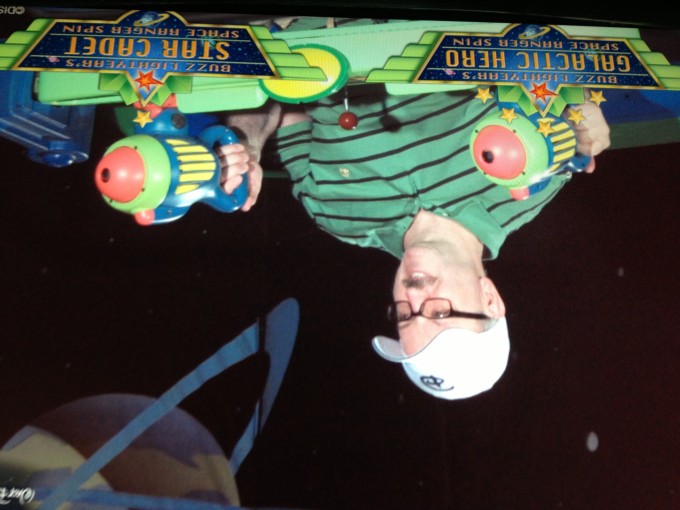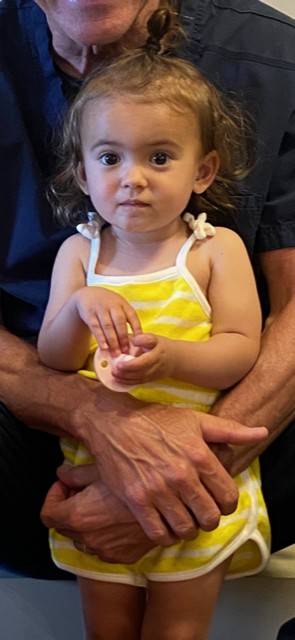Live and Learn
Just thought I would share a case I completed on Friday where I previously succumbed to the definition of insanity-doing the same thing over and over and expecting a different result! Patient is a 46 year old male(neighbor of mine) who has a clear history of bruxism and has had his lateral incisors bonded many times(including by me) over the years. Here is how he presented:
Now, the last couple of times I really tried to make sure there was no pressure on the laterals...we have had discussions about a more comprehensive treatment plan but that is not really in the cards for him at this time. He was looking for a more definitive solution for the laterals, and I was trying to figure out why he keeps snapping his bonding off. Well, trying to think about things a little more thoroughly, I took a look at his maxillary canines and his lateral movements-here is what I saw:
Obviously, he has lost his canine guidance and has been whacking on the laterals, which has caused him to ruin any bonding he had done. I probably could have bonded this 100 more times and still had the same problems. So, we decided to try something I picked up at a composite course from Dr. Ron Jackson(great instructor, by the way), and restore the canine guidance with composite-now, this will likely wear back down over time, but we can monitor it at his recare appointments and "refresh" the composite as needed-and since an overhaul isn't a possibility right now, this is a nice compromise. So, we prepared 7 and 10 for all porcelain crowns, keeping the lingual margin above the cingulum to preserve as much tooth structure as possible, and built up the incisal edges of 6 and 11 with composite:
We restored 7 and 10 with e.max A-3 MT with some white at the mesial line angle(Kris:)) and a little sunset at the gingival...added some texture to try and get the appropriate light reflection. The patient was happy(as was I), and hopefully this gives him some stability in that area. I have had many frustrating cases over the years where I have bonded an anterior tooth only to have it get chipped a few months later...especially when I have stayed in the "single-tooth" mindset. Probably could have saved myself a lot of headaches just by thinking about things differently, as in this case...hopefully this helps someone else who has faced the same situation!
Nice work! Those are tough cases, and hopefully the guidance will preserve your work....those guys can be so hard on their teeth, and they keep looking at you like why doesn't your work hold up. Stay after those canines(you may also need to give him some guidance off the centrals, mx lingual) so he doesn't destroy the ceramics. Cheers, JJ
Just curious why he wouldn't just chip off the bonding on the built-up canines as he has done with the laterals on numerous occasions? I understand reestablishing canine guidance, but my thinking would be that doing it with composite may give you the same result as it has with the lateral situation. Those restored laterals look good by the way.
Paul
Nice job Ponz!.... I wouldn't consider bonding the canines to be a compromise (I think that was your word?)- but a great first choice to accomplish what you did. Even if you were going to use another material and veneer the canines, I'd rather build it up in composite first and see exactly how well patient tolerates it, or is just going to beat the snot out of it....very nice...
Mark
I can't tell you how many times I have bonded the canines with resin and only had one person break one off which I fixed with no issue. I learned this from a prosthodontist when I was active duty. Each person I did this to loved it because hey hadn't felt that in years. I would use a hybrid composite for wear properties but you will be surprised how long it lasts.
Great work Ponz.
Jeff, thanks for the input on your experience bonding canines. I haven't done it for this purpose, and was just wondering how it would differ from bonding the laterals and having them break. This is a good option to have in the back pocket on cases like this. Thanks.
Paul
Hey Paul-
I have had good success as well on the cases I have done this on...and as mentioned before, it shows how well they can tolerate regaining canine rise. The only sure thing was that if I did nothing he would demolish the new restorations much faster...
Mark-
When I called it a compromise, I was more referring to the fact we weren't treating his extensively worn dentition and were just trying to solve his immediate concern of repeatedly fracturing the laterals. I am assuming(hoping?) this will hold up for him for a long time, but time will tell!
Great approach. Canine guidance is protective and lack thereof destructive. I find the approach with restoring the canines absolutely critical, the question which material is secondary. As you stated monitoring the wear will help you to protect the patient and your work. My question is though has the bruxism been worked up. Is it sleep apnea related, etc. In the long run that could be the important thing to know.
Have had the same issue in the past with composites on laterals and centrals debonding, even when kept in light or no apparent occlusion. Amazing how much better they've done when we've addressed the canine guidance, worn canines. A great first step as a treatment towards Juergens point of discovering and treating the underlying cause of the wear.






















